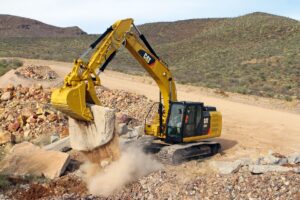A Quick Guide to Hydraulic Tool Safety and Maintenance
By Jane Marsh, Contributor

As with any power tools, workers should wear appropriate personal protective equipment when using hydraulic construction tools.
Construction is a hazardous industry. The sector accounts for 20% of all worker fatalities1 in private industry, but it doesn’t have to be dangerous. Steps like ensuring hydraulic construction tool safety can make a substantial difference.
Hydraulic tools are a standard across the industry. In addition to being powerful and durable, they’re energy-efficient, and considering construction is responsible for 23% of air pollution2, that’s hard to ignore. At the same time, the high pressures and energy density of this equipment can make it risky.
To help, here’s a quick guide to hydraulic hand tool safety.
Inspect Tools Before Use
Hydraulic construction tool safety starts before the job even begins. Before workers use these tools, they should check their condition to ensure they’ll operate safely. For most hydraulic tools, that includes checking for leaks, unusual temperatures, tears, cuts, or knots in the hose.
A leak in a hydraulic system can release fluid close to the muzzle velocity3 of a gun, so workers should check for leaks with another object, not their hands. It’s also important to ensure the system is cool before using. If you notice any potential issues, report them immediately and use a different tool.
Always Monitor Tool Pressure and Power
One of the most crucial considerations for hydraulic safety is monitoring pressure. Always keep an eye on pressure gauges during inspections, while using tools, and when maintaining equipment. If you have to release any pressure, secure any moving parts or loads first.
Many of these tools require power units to generate torque4, so it’s important to check these electric systems as well. Never run a machine while maintaining it, and as an extra precaution, disconnect the equipment from power sources when not in use. Just as workers check hoses and hydraulic systems for leaks or damage, they should check electrical cords.
Store Tools Safely

Construction is a hazardous industry. The sector accounts for 20% of all worker fatalities in private industry.
Proper storage is a crucial part of any hand tool safety, but it’s especially important with hydraulic equipment. Without secure storage, these tools could get dings, tears, or punctures on the way to and from the worksite, which can be dangerous considering their high pressure. Similarly, their hoses should be neatly coiled and away from sunlight to preserve their integrity.
Always put any hydraulic construction tools up as soon as you’re done working with them. You may also consider implementing a lockout/tagout procedure to ensure compliance with these guidelines.
Wear Appropriate PPE
As with any power tools, workers should wear appropriate personal protective equipment (PPE) when using hydraulic construction tools. What that entails depends on the specific equipment itself, but safety glasses and work gloves apply to every situation. Eye and face protection is also in the top 10 most common OSHA violations5, so it’s worth emphasizing this point.
Without reliable PPE, hydraulic equipment could cause puncture wounds, burns, injuries related to flying debris, or more. Safe usage will reduce many risks, but these potential injuries are too severe to ignore PPE.
Train Everyone Thoroughly
Finally, team leaders should ensure that everyone goes through thorough training on hand tool safety. Everyone who uses one of these tools should know how to operate them safely, as well as proper lockout procedures. Those who don’t use them should still know what risks they pose to encourage them to steer clear.
Workers should pass basic safety quizzes before using these tools. Periodic refresher training is also important, as it ensures no one forgets these steps or becomes complacent.
Hydraulic Construction Tools Demand Care and Attention
Hydraulic construction tools are some of the most helpful equipment on the worksite, but they can be hazardous. They demand your careful attention to avoid injury.
When everyone understands the risks these tools pose and how to avoid them, they can experience their benefits safely. Without thorough safety training and procedures, these tools may become more dangerous than helpful. CS
Jane Marsh is an independent writer who covers topics in green technology and manufacturing. She also works as the Editor-in-Chief of Environment.co.
- https://www.osha.gov/data/commonstats
- https://environment.co/renewable-energy-construction/
- https://www.forconstructionpros.com/equipment/fleet-maintenance/other-components/article/10292239/think-safety-when-it-comes-to-maintenance-of-hydraulic-systems
- https://rgctools.com/hydrapaks/
- https://www.oshaeducationcenter.com/articles/top-10-osha-violations/



